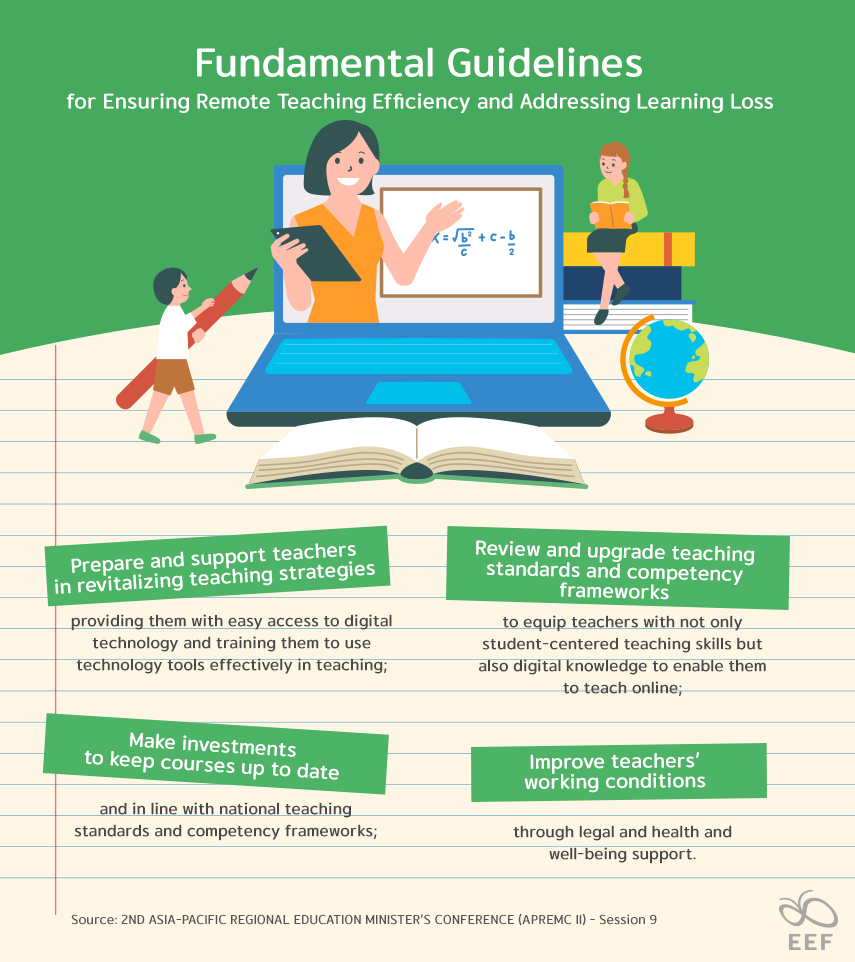
Teachers are the “core” of educational systems; They are crucial for students’ academic success as well as health and well-being. More than 43 million teachers in the Asia-Pacific region have, however, been affected by school closures brought on by COVID-19, putting them at risk of, among many other things, losing their jobs due to reduced funding, not to mention the challenge of online teaching and health concerns like cumulative fatigue.
Teachers, nevertheless, continue to rigorously teach students, within the constraints of the closures. To ensure students will continue to study uninterrupted, teaching worldwide has had to change. And this is where ICT has come into play; Throughout the pandemic, ICT has been crucial to the development of teaching and learning. Yet again, despite the need to uphold teaching quality, teachers in some areas in the Asia-Pacific region are facing numerous challenges, including, but not limited to, inadequate pay for increased workloads, impaired performance due to cumulative fatigue, lack of technological equipment, training, and support for physical and mental health, which all contribute to regional disparities.
Essentially speaking, such disparity gaps depend on where teachers come from; There are areas with state-of-the-art technologies, areas with out-of-date technologies, and areas with no technologies at all. To be able to assist their teachers and students, every government must first be aware of the backgrounds, resources, and technological needs of those individuals. However, amid the pandemic, the governments have been pushing their teachers to use cutting-edge ICT, only to forget that they are equipped only with basic skills, which allow them no more than to find teaching materials available on social media. Many teachers are left to figure it out on their own. This might not be the best place to start, but that is all they have, so they are compelled to make use of it.
The COVID-19 crisis has brought home just how crucial digital technology is to remote teaching. However, many teachers are nonetheless inadequately trained in online teaching. According to the UNESCO Institute of Statistics (UIS), 64% of teachers in the Asia-Pacific region received specialized training to enable them to teach online, while 18% did not receive any specialized support because they lacked the competence or did not require it in the first place. 93% of teachers in the Asia-Pacific region were advised to use radio, television, and online teaching materials for remote teaching. In comparison, 75% of them were able to improve the existing content for online teaching.
In light of the foregoing, to ensure remote teaching efficiency, training on how to distinguish information circulating on the internet and deal with misinformation and disinformation as well as how to assess and address learning loss must be provided for teachers, along with their physical and mental health support. The following are the fundamental guidelines for the change:

Suffice it to say, teacher support goes beyond talking about “responsibility,” and instead focuses on “motivation,” by giving them what they want.
Source: 2ND ASIA-PACIFIC REGIONAL EDUCATION MINISTER’S CONFERENCE (APREMC II) – Session 9

